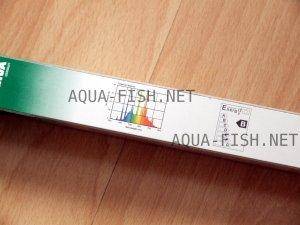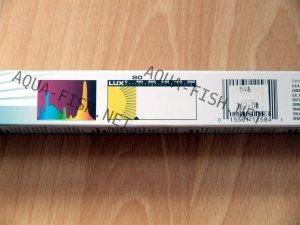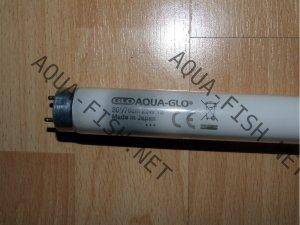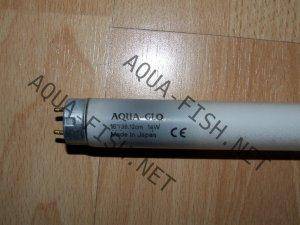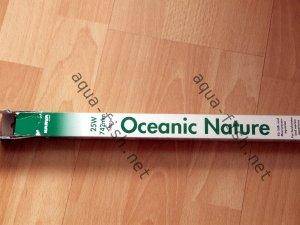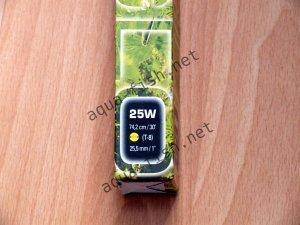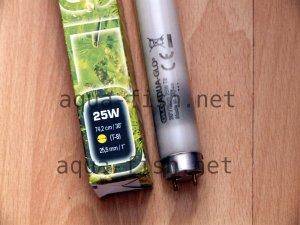Freshwater Aquarium Lighting – Complete Guide (PAR, Photoperiod, LED vs T5, Hoods & Safety)
a guide to lights for freshwater aquariums

Quick navigation
Brief Description
This page is your modern, consolidated guide to freshwater aquarium lighting. It replaces older watt-per-gallon advice with practical PAR-based targets, explains photoperiod, compares LED vs. fluorescent (T5), and covers hoods, submersible accent lights, safety, and FAQs. Share your own lighting experience at the bottom of this page!
Key Takeaways
Don’t use watts-per-gallon.
Aim for PAR at the substrate: low ~20–40, medium ~40–80, high ~80–120 μmol·m⁻²·s⁻¹.
Photoperiod:
new tanks 6–8 h/day, established 8–10 h/day, one continuous block (no 3 h on / 3 h off).
LED is the default
(efficiency, dimming, spectra). T5 is still viable; T8/PC/VHO/MH are legacy/special cases.
Hoods
reduce evaporation, stop jumpers, and host lights—ensure ventilation and electrical safety.
Underwater lights
are decorative only; use briefly after lights-out, not all night.
Algae = imbalance of light ↔ CO₂ ↔ nutrients
Light is only one part of the equation.
Why Lighting Matters
Lighting drives photosynthesis in plants, supports natural day–night rhythms, and shows fish colors accurately. Stable light with an appropriate intensity and duration improves growth and reduces stress. Direct sun through windows is unreliable and can cause overheating and algae blooms—use a dedicated aquarium light instead.
Light Metrics: PAR/PUR vs. Lux/Lumen, Kelvin & CRI
- PAR (photosynthetically active radiation) and PUR (useful spectrum) reflect light available for plant growth. Target PAR at the substrate.
- Lux/lumens reflect human-perceived brightness; useful for aesthetics, not plant decisions.
- Kelvin (CCT) affects appearance; 5000–7000 K “daylight” looks natural and is fine for plants if PAR is sufficient.
- CRI (Ra) indicates color fidelity. Higher CRI renders fish and plants more naturally.
- Target CRI (Ra): Aim for CRI ≥ 90 when possible for the most natural color rendering of fish and plants; growth still depends primarily on PAR/PUR.
- You don’t need to “recreate the sun”: Match PAR at the substrate and run a stable photoperiod. Kelvin (CCT) mainly affects appearance—5000–7000 K looks natural; more “blue” (higher K) doesn’t mean more plant growth.
How Much Light Do I Need?
Choose a target based on goals and maintenance style:
- Low light (no pressurized CO₂, low-tech): ~20–40 μmol·m⁻²·s⁻¹ at substrate. Plants: Anubias, Microsorum, Cryptocoryne, mosses.
- Medium light (liquid CO₂ or moderate nutrients): ~40–80 μmol. Wider plant choice, faster growth.
- High light (pressurized CO₂): ~80–120 μmol. Very fast growth; requires strict CO₂/nutrient balance.
Measuring the light: The preferred tool is a PAR (quantum) meter with immersion correction, measured at the substrate and in several points to check coverage. If you don’t have one, a lux meter can still help for relative checks (uniformity, aging, dirty covers) — but lux gauges human brightness, not plant-usable light.
- Lux → PAR (very rough rule for 5000–7000 K “daylight” LEDs): PAR ≈
lux / 60.
Approximate bands: ~1,200–2,400 lux ≈ 20–40 μmol (low), ~2,400–4,800 lux ≈ 40–80 μmol (medium), ~4,800–7,200 lux ≈ 80–120 μmol (high).
Expect large error (±30–50%) due to spectrum, optics, depth, tannins/reflections. - Good uses of a lux meter: map multiple spots above the cover glass to see evenness; log a baseline on day 1 and compare monthly to catch output drops; check gains after cleaning glass/lenses.
- Avoid with a lux meter: underwater readings with non-immersion devices, and cross-comparing different spectra (warm vs. cool LEDs, T5 mixes) — lux becomes misleading.
No PAR meter? Start conservatively (6–8 h/day), observe plants and algae, then adjust. Prioritize even coverage over raw intensity, and keep cover glass/optics clean to prevent hidden light loss.
Photoperiod & Control
- New tanks: 6–8 hours/day. Established: 8–10 hours/day. Increase by ~30 minutes every 2–3 weeks if stable.
- Continuous window: avoid split cycles like 3 on / 3 off (stressful for fish and plants).
- Timers: mechanical or smart. With LED, add gentle sunrise/sunset ramping.
- Moonlight: decorative only; use briefly after lights-out. Don’t run all night—fish need darkness.
- Gentle transitions: If you don’t have dimming, avoid sudden dark-to-bright changes—switch on a room light a few minutes before the tank light (and reverse at lights-out) to reduce startle responses.
Timer scheduling tips
One block, on your schedule:
Run a single 8–10-hour photoperiod aligned with when you actually view the tank (e.g., evenings at home; business opening hours for public displays).
Staggered channels:
If you have multiple circuits, let “Channel A” switch on ~30 minutes before “Channel B” and switch off ~30 minutes after to create a gentle dawn/dusk effect.
Moonlight, briefly:
Keep blue “moonlight” on for only 30–60 minutes after lights-out for evening viewing, then go dark to preserve fish circadian rhythms.
Reliability & safety:
Use a timer with power-loss memory, label cords, avoid daisy-chaining extension leads, and use an IP-rated power strip with drip loops and RCD/GFCI protection.
Lighting Technologies
LED (Baseline Choice)
- Efficient, dimmable, configurable spectra; minimal heat to water; long lifespan.
- Mind driver quality, ventilation in hoods, and losses through cover glass (keep it clean).
- Optics/beam patterns determine spread—aim for even coverage.
- Mounting options: rim-mount brackets on the tank rim, fixed brackets on the hood, or ceiling suspension (wire kits). Leave safe clearance above the water and route cords with drip loops.
- Depth strategy: on deeper tanks (>50–60 cm), combine higher-output fixtures with narrower optics (e.g., 60°–90°) to maintain PAR at the substrate; on shallow tanks, prefer wider beams or more clearance for even spread.
- Low UV/IR: typical white LEDs emit negligible UV/IR. Some fixtures add near-UV/violet (≈400–420 nm) for appearance—fine in moderation when used as designed.
- Thermal impact: LEDs dump far less heat into the water than MH/halogen, which can slightly reduce evaporation and temperature swings.
Pictures of LED Aquarium Lights
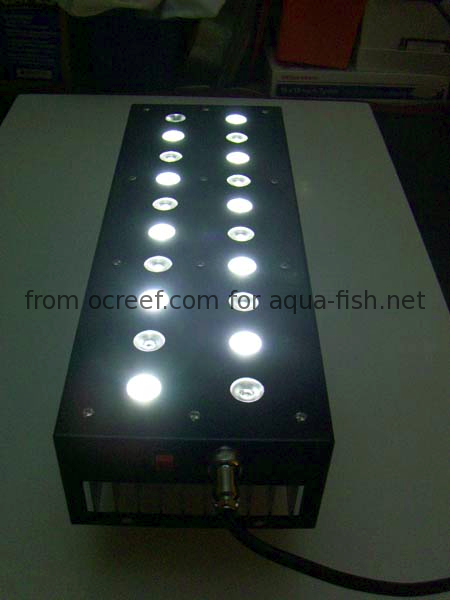
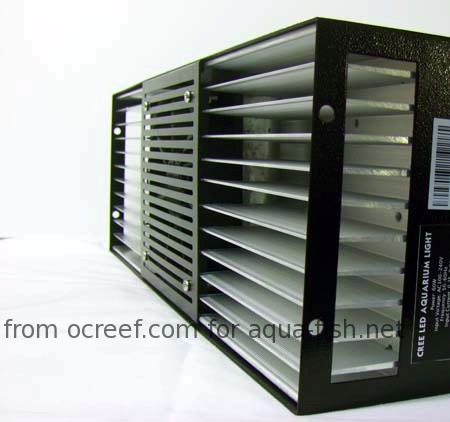
Thanks to OCReef for pictures
Fluorescent – T5/T8/T12, VHO, Compact (PC)
- T5 (HE/HO) remains useful—especially with individual reflectors for depth and spread.
- T8/T12/PC/VHO are legacy options; higher power draw, more heat, spectral shift over time.
- Match tube type/length/wattage to ballast. When retrofitting LED into old fixtures, check ballast compatibility or bypass as specified.
- Common T5 HO sizes (length ↔ wattage): 24 W ≈ 22" (~550 mm); 39 W ≈ 34" (~850 mm); 54 W ≈ 46" (~1150 mm). Always match lamp/fixture spec (pin-to-pin length) and ballast type.
T8 vs T12: operation & conversion notes
- Ballasts: T12 fixtures typically use magnetic ballasts (noisier, less efficient); T8 uses electronic ballasts (quieter, more efficient). If you’re converting T12→T8, replace the ballast with a compatible electronic T8 model and verify lampholder compatibility.
- Sockets: Most T8/T12 tubes share the G13 bi-pin base. In many fixtures the existing lampholders remain usable; always confirm fit and temperature rating.
- What improves: Efficiency and noise, plus the slimmer T8 diameter lets you pack tubes and reflectors more intelligently for better spread—don’t expect “dramatically brighter” from the same wattage alone.
- Safety: Match lamp type/length/wattage to the new ballast, respect fixture limits, and ensure proper thermal clearance. Never exceed the rated wattage.
- Availability: T12/T8 aquarium-specific lamps are being phased out in many markets; plan for a future upgrade to T5 with individual reflectors or LED bars for easier sourcing and control.
- Choose neutral daylight tubes: 5000–7000 K with CRI ≥ 90 are safe, plant-friendly defaults.
- Mixing color temperatures: Combining, e.g., 5000 K 6500 K can balance appearance; it’s optional and aesthetic—not required for growth.
- Avoid extreme spectra: Very red “plant stimulant” or actinic/blue tubes can skew the look and encourage algae if CO₂/nutrients aren’t balanced. Keep the system balanced first; adjust color later.
- T-sizes & diameters: T5 = 5/8" (16 mm), T8 = 1" (26 mm), T12 = 1.5" (38 mm). The smaller T5 diameter allows more tubes/individual reflectors in the same space.
- NO / HO / VHO: NO = normal output (fish-only or low-light); HO = high output (most planted tanks); VHO = very high output (historically for depths > 60 cm, now largely replaced by LED/T5).
- Compact fluorescent (PC): Available in 2-pin linear/square and screw-in formats; always respect the fixture’s maximum wattage and the correct socket/ballast type.
Coverage & fixture sizing
Prioritize even coverage across the tank’s footprint. A fixture (or tube set) that spans most of the aquarium length reduces dark corners and algae-prone shadow bands.
- T5/T8: Match tube length to the tank length where practical; use individual reflectors or a light-colored reflector panel (matte white or lighting-grade aluminum reflector film). Avoid kitchen aluminum foil — it degrades and can overheat.
- LED bars/panels: On longer tanks, prefer 2–3 narrow bars spaced evenly rather than a single “spotty” source. On very shallow tanks, choose a wider beam angle or increase the clearance above the water.
- Front–back placement: Shift one strip toward the front edge and another toward the back to illuminate both foreground and background without a “tunnel” effect.
- Mounting layout: For suspended bars, center the array front-to-back and adjust height until shadows disappear but glare stays low. For rim-mounts inside hoods, keep lenses/splash guards clean to avoid hidden light loss.
Metal Halide (Legacy Context)
Strong point source with deep penetration
Largely replaced by LED/T5 due to heat and efficiency.
Requires UV shielding and good ventilation.
Mostly historical for freshwater use.
High surface temperatures and UV output require proper fixtures/ballasts, UV shielding, and safe clearances
Improper use can pose heat or fire hazards.
Point-source character:
Creates strong shimmer and high-contrast light/shade zones; great visually but less even coverage than multi-bar LEDs or T5 with individual reflectors.
Form factor limits:
Not recommended for small tanks (<150–200 l) or sealed/closed hoods due to heat and ventilation needs.
Incandescent / Halogen (Not Recommended)
- Inefficient, run very hot, and provide unsuitable spectra for plants; today they’re largely replaced by LED or T5.
Hoods & Enclosures
Hoods reduce evaporation, prevent contaminants entering the tank, stop jumpers, and host lights. Materials:
- Plastic: light, easy to cut and adapt.
- Wood: aesthetic; seal thoroughly, use condensation trays or covers to protect from moisture.
DIY basics: accurate measurements, hinged access flaps, cord/hose pass-throughs (with grommets/sealant), a small feeder opening if needed, and removable sections for maintenance.
Safety & airflow: use RCD/GFCI, a drip loop, splash guards/cover glass, corrosion-resistant hardware, and ventilation to avoid heat build-up. A mildly warm hood is normal; overheating means checking drivers/ballasts and airflow.
Underwater / Submersible Lights (Decorative)
- Use as accent after lights-out; not a primary plant light.
- Run briefly; avoid all-night illumination to protect circadian rhythms and reduce algae risk.
- Safety: only IP68 submersible units, low-voltage (SELV), RCD/GFCI protection, drip loop, regular seal checks. Avoid DIY submersible builds.
- Installation tips: Mount securely (suction cups or clips per manufacturer) and give cables a drip loop and strain relief above the waterline. Place lights behind hardscape or along the back pane to avoid glare; don’t bury them under substrate or wedge under rocks (heat and cable damage risk). Clean lenses and housings regularly to prevent algae film that reduces output. Avoid in tanks with heavy diggers that can dislodge fixtures.
Troubleshooting (Algae & Balance)
- Too much light, not enough CO₂/nutrients → typical algae. First steps: shorten photoperiod, stabilize CO₂, tidy hardscape, clean cover glass/reflectors.
- Uneven coverage → shadows and local algae. Solutions: reposition lights, add bars/reflectors, improve spread.
Example Setups
- Nano low-tech (no CO₂): low PAR LED; 6–8 h/day; plants: Anubias, Java fern, mosses; gentle flow.
- Medium planted (90–180 l): medium PAR; 8–9 h/day; moderate fertilization; optional liquid carbon.
- High-tech (CO₂): high PAR; 8–10 h/day; pressurized CO₂, full fertilization schedule, robust filtration and weekly maintenance.
Maintenance & Replacement
- Clean cover glass, lenses, and reflectors regularly—dirt can rob a surprising % of output.
- Fluorescent tubes dim/shift with age—replace on schedule (commonly ~9–12 months of use for T5, depending on hours/day).
- Check LED drivers, wiring, gaskets, and mountings; ensure adequate ventilation in hoods.
- Always maintain RCD/GFCI protection and drip loops on all cords near water.
- LED fixtures with fans/heat-sinks: vacuum dust from grills/fins and verify fan operation; blocked airflow shortens driver/LED life.
- Serviceability: prefer fixtures with replaceable power supplies/drivers and readily available parts to extend lifespan.
FAQ (Modernized)
LED or T5—what’s better?
LED is more efficient, dimmable, cooler, and offers controllable spectra. T5 with individual reflectors still works well, especially on standard-depth tanks. Choose based on coverage, controllability, and budget—not on watts.
How many hours should I run the lights?
New aquariums 6–8 hours/day; established 8–10 hours/day. One continuous window is best; avoid fragmented schedules.
Do Kelvin (CCT) and CRI matter?
Use ~5000–7000 K “daylight” for a natural look and adequate plant response. High CRI renders colors better. For growth, the amount of useful light (PAR/PUR) matters most.
Why do my fish look different under various lights?
Different spectra and color rendering (CRI) shift how our eyes perceive reds/blues and contrast. Higher-CRI “daylight” (~5000–7000 K) renders colors more naturally; it doesn’t boost growth by itself—that depends on PAR/PUR.
Is moonlight useful?
It’s decorative for short evening viewing. Don’t run all night—fish and invertebrates benefit from dark periods.
Can I rely on room daylight?
No. It’s inconsistent and can cause overheating or algae. Use a dedicated aquarium light and timer.
How do I know if I have too much or too little light?
Too much: explosive algae, plant burn, daily pearling with overall instability. Too little: elongated, weak growth, poor coloration. Adjust photoperiod/intensity and balance CO₂ and nutrients.
Are submersible lights safe?
Yes—if they’re true IP68 submersible units powered by low voltage (SELV) with RCD/GFCI protection and proper drip loops. Don’t DIY submersible lights.
When should I replace fluorescent tubes?
Commonly around 9–12 months of regular use for T5 (depending on daily hours). Replace sooner if output clearly drops or colors shift.
Why is “watts per gallon” outdated?
Watts measure power consumption, not usable light. Different technologies and optics produce vastly different PAR from the same wattage.
Is a midday “siesta” (split photoperiod) helpful?
Generally no. Most freshwater setups do best with one continuous 6–10 h window. Split cycles can stress fish and plants and complicate CO₂ stability; use dimming/ramping instead.
Can I use household LED bulbs instead of aquarium lights?
Sometimes — but there are trade-offs. Household LEDs can look fine (5000–6500 K, high CRI), but they usually lack the optics/diffusion for even tank coverage, aren’t moisture-protected, and often don’t dim well.
- Safety: use fixtures with an ingress-protection rating, drip loops, and an RCD/GFCI; never expose mains voltage (120/230 V) near water; never submersible.
- Coverage: to get uniform light you’ll need multiple sources, a diffuser, or more clearance above the water.
- Spectrum: choose “daylight” 5000–7000 K with CRI ≥ 90; plant growth still depends mostly on PAR, not on Kelvin alone.
For reliable control, moisture resistance, and even spread, purpose-built aquarium LED bars or T5 with individual reflectors are usually the better choice.
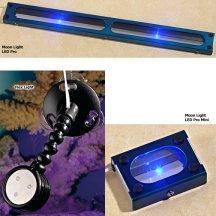
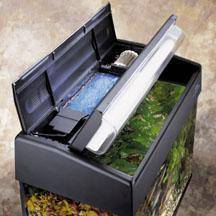

We are not advertising any product. Images are informational only.

